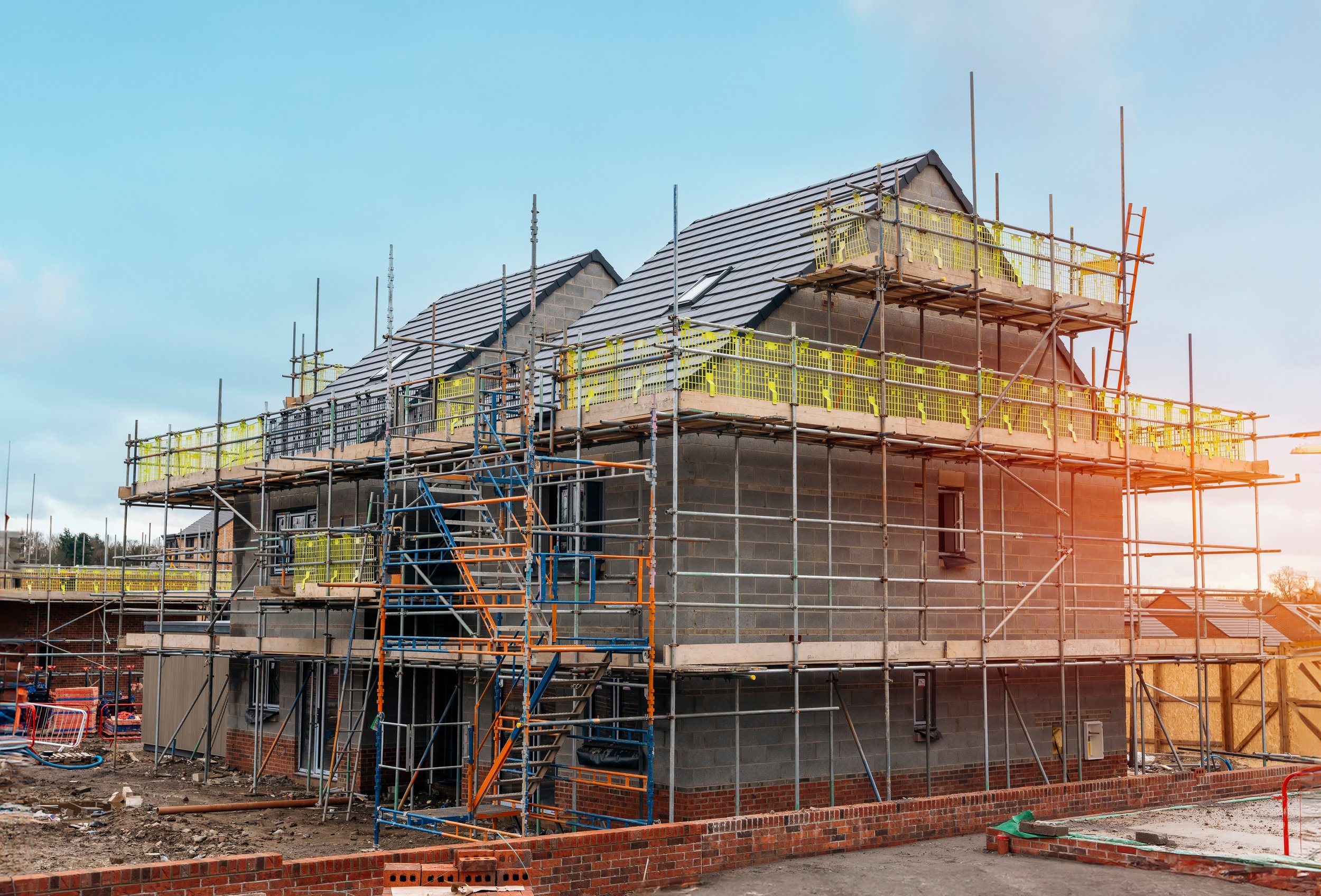
Difference Between Flat Roof and Pitched Roof
A comprehensive guide comparing the differences between two primary roof structures
Choosing the right type of roof for a building is crucial, as it affects not only the aesthetic appeal but also the functionality, maintenance, and overall performance of the structure.
Flat roofs and pitched roofs are the two primary roofing styles, each with distinct characteristics, advantages, and disadvantages. This guide explores the key differences between flat roofs and pitched roofs to help you make an informed decision.
Design and Structure
Flat Roof:
Design: Flat roofs have a nearly level surface with a slight pitch (typically 1-10 degrees) to allow for water drainage.
Structure: Consists of a horizontal deck, usually supported by beams and covered with a waterproof membrane.
Pitched Roof:
Design: Pitched roofs have a steep slope (greater than 10 degrees), with two or more sloping sides that meet at a peak or ridge.
Structure: Typically involves a framework of rafters or trusses to support the sloping roof surfaces.
Drainage and Water Management
Flat Roof:
Drainage: Requires a well-designed drainage system to prevent water pooling, often incorporating internal drains, scuppers, and gutters.
Water Management: Relies on a waterproof membrane to prevent water ingress, making regular maintenance and inspections crucial.
Pitched Roof:
Drainage: Naturally facilitates water runoff due to its steep slope, reducing the risk of water pooling.
Water Management: Utilizes roofing materials like tiles, shingles, or metal panels, which are overlapped to shed water effectively.
Materials
Flat Roof:
Common Materials: EPDM (rubber), TPO (thermoplastic polyolefin), PVC, bitumen, and GRP (fibreglass).
Durability: Materials are chosen for their waterproofing capabilities and flexibility to accommodate slight movements.
Pitched Roof:
Common Materials: Asphalt shingles, clay or concrete tiles, slate, metal, and wood shakes.
Durability: Materials are selected for their durability and ability to withstand various weather conditions, often providing a longer lifespan than flat roof materials.
Installation and Maintenance
Flat Roof:
Installation: Generally quicker and easier to install, especially on larger buildings, due to the simplicity of the design.
Maintenance: Requires regular inspections and maintenance to ensure the waterproof membrane remains intact and drains are not blocked.
Pitched Roof:
Installation: More complex and time-consuming to install, requiring skilled labor to ensure proper alignment and fastening of materials.
Maintenance: Typically requires less frequent maintenance, though inspections are still necessary to check for damaged or missing tiles/shingles.
Usable Space
Flat Roof:
Usable Space: Can be utilized as additional living space, such as a rooftop garden, terrace, or solar panel installation area.
Accessibility: Easier to access for maintenance and inspections, often with a staircase or ladder.
Pitched Roof:
Usable Space: Limited usable space on the exterior, though the interior attic space can be used for storage or converted into living space.
Accessibility: More challenging to access for maintenance, typically requiring professional assistance.
Cost
Flat Roof:
Initial Cost: Generally lower initial cost due to simpler design and quicker installation.
Long-term Cost: Potentially higher long-term costs due to more frequent maintenance and shorter lifespan of materials.
Pitched Roof:
Initial Cost: Higher initial cost due to complex design and longer installation time.
Long-term Cost: Often lower long-term costs due to greater durability and less frequent maintenance requirements.
Aesthetic Appeal
Flat Roof:
Appearance: Offers a modern, minimalist aesthetic, often used in contemporary and commercial architecture.
Integration: Blends well with urban landscapes and modern building designs.
Pitched Roof:
Appearance: Provides a traditional, classic look, commonly seen in residential architecture.
Integration: Complements various architectural styles, adding character and charm to the building.
Climate Suitability
Flat Roof:
Climate: More suitable for arid or mild climates where heavy rainfall or snow accumulation is less common.
Heat Management: Can absorb more heat, making insulation and ventilation critical in hot climates.
Pitched Roof:
Climate: Ideal for regions with heavy rainfall or snowfall, as the slope facilitates natural water and snow runoff.
Heat Management: Better for cold climates, as the pitch helps shed snow and prevents ice dams.
Conclusion
Both flat roofs and pitched roofs have their unique advantages and disadvantages. The choice between the two depends on various factors, including the building's design, climate, intended use, and budget. Flat roofs offer modern aesthetics and additional usable space, while pitched roofs provide better water drainage, durability, and a classic appearance. Consulting with a professional roofer can help you determine the best roofing solution for your specific needs and preferences.
Top Articles
► Planning Permission for a New Roof
► Building Regulations for a New Roof
► Does a New Roof Add Value to Your Home?
► Does Insurance Cover Roof Leaks?
Roofing Materials Explained
► Code 3 and Code 4 Lead Flashing
► Slates
► Best Materials for Flat Roofs
Roofing Components
► Roof Ventilation for Flat Roofs
► What are Soffits and Fascias?
► What is a Fibreglass Flat Roof?
Common Guides
►How Much Does a New Roof Cost
► How to Find a Leak in Your Roof
► Why is my Velux Window Leaking?
► Planning Permission Velux Windows
► How to Clean Roof Tiles Without Pressure Washer
► Removing Moss from Roof Tiles
